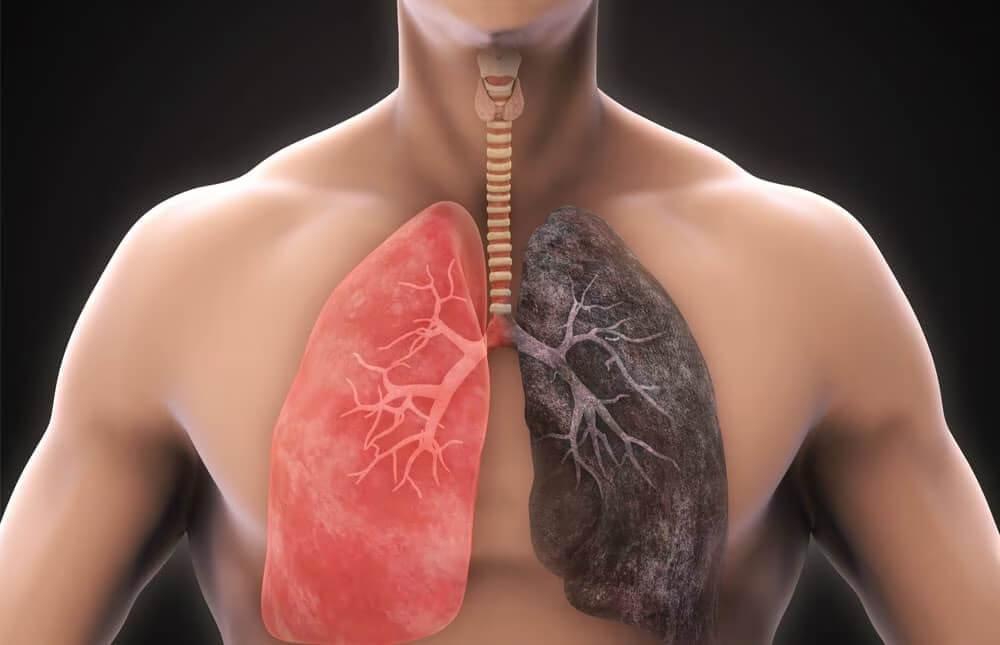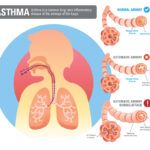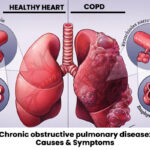Chronic Obstructive Pulmonary Disease (COPD) is a progressive lung disease that obstructs airflow, making breathing increasingly difficult. It is a condition that worsens over time and is primarily caused by prolonged exposure to harmful substances, most notably cigarette smoke. COPD encompasses various respiratory conditions, such as chronic bronchitis and emphysema. This article delves into the causes, symptoms, stages, and treatment options for COPD, offering a detailed understanding to help manage and prevent the disease.

Understanding Chronic Obstructive Pulmonary Disease (COPD)
COPD refers to a group of lung diseases that block airflow and hinder normal breathing. The two most common forms of COPD are chronic bronchitis, which involves inflammation and mucus production in the airways, and emphysema, which damages the alveoli (the tiny air sacs in the lungs responsible for gas exchange). The condition is progressive, meaning it worsens over time, leading to reduced lung function and increased difficulty in breathing.
Key Causes of COPD
The primary cause of COPD is long-term exposure to irritants that damage the lungs, with smoking being the leading risk factor. However, non-smokers can also develop COPD due to prolonged exposure to pollutants, chemicals, and dust, especially in certain occupational settings. Genetic factors, such as alpha-1 antitrypsin deficiency, can also increase the risk of developing COPD.
1. Smoking
Smoking is the number one cause of COPD. The harmful chemicals in tobacco smoke irritate the airways and cause inflammation, leading to a gradual loss of lung function. Both active smoking and exposure to secondhand smoke can contribute to COPD.
2. Air Pollution
Long-term exposure to outdoor air pollution, including industrial emissions, vehicle exhaust, and indoor pollutants from cooking or heating with solid fuels, can damage the lungs and increase the risk of COPD.
3. Occupational Hazards
Workers in industries where dust, fumes, and chemicals are prevalent (such as construction, mining, and agriculture) are at higher risk of developing COPD. The prolonged inhalation of these substances can damage the lung tissue over time.
4. Genetic Factors
Though less common, some individuals are born with a deficiency in a protein called alpha-1 antitrypsin, which helps protect the lungs from damage. This genetic condition can increase susceptibility to COPD, even in the absence of smoking or environmental pollutants.
Symptoms of Chronic Obstructive Pulmonary Disease
COPD typically develops slowly, with symptoms often becoming more noticeable as the disease progresses. Early signs may be subtle, but as lung function declines, the symptoms become more pronounced.
Common Symptoms of COPD:
- Chronic cough: Often worse in the morning, this cough may produce mucus and persist for weeks or months.
- Shortness of breath: Especially during physical activities, but as the disease progresses, it may occur even during rest.
- Wheezing: A high-pitched whistling sound while breathing, particularly during exhalation.
- Chest tightness: A sensation of pressure or constriction in the chest.
- Frequent respiratory infections: Increased susceptibility to bronchitis and pneumonia due to weakened lung function.
- Fatigue: Reduced oxygen levels in the blood can lead to tiredness and low energy levels.
Stages of COPD
COPD is classified into four stages based on the severity of symptoms and lung function. The stages help doctors determine the appropriate treatment and management strategies.
1. Stage 1: Mild COPD
In the early stages, the symptoms may be minimal, and many individuals may not realize they have the condition. Lung function tests may show mild airflow limitation.
2. Stage 2: Moderate COPD
As COPD progresses, individuals begin to experience more pronounced symptoms, such as shortness of breath during physical activity. This stage is often when individuals seek medical attention.
3. Stage 3: Severe COPD
At this stage, individuals experience significant airflow limitation and may have difficulty performing everyday activities due to shortness of breath. The risk of complications, such as heart problems or respiratory infections, increases.
4. Stage 4: Very Severe COPD
This is the most advanced stage of COPD, where lung function is severely impaired, and the individual may require oxygen therapy to help with breathing. Hospitalizations for exacerbations of COPD become more frequent.
Diagnosing Chronic Obstructive Pulmonary Disease
Early diagnosis is crucial for effective COPD management. The diagnosis of COPD involves a thorough medical history, physical examination, and a series of tests to assess lung function.
1. Spirometry
Spirometry is the most common test for diagnosing COPD. It measures the amount of air you can exhale and how quickly you can do so. Reduced airflow is a key indicator of COPD.
2. Chest X-ray or CT Scan
These imaging tests help rule out other conditions and assess the damage to the lungs. A chest X-ray can show signs of emphysema, while a CT scan can provide more detailed images.
3. Arterial Blood Gas Test
This test measures the levels of oxygen and carbon dioxide in your blood to evaluate how well your lungs are functioning.
Treatment and Management of COPD
Although there is no cure for COPD, there are treatments available to help manage symptoms, slow disease progression, and improve quality of life.
1. Smoking Cessation
The most important step in managing COPD is quitting smoking. Stopping smoking can prevent further damage to the lungs and improve lung function over time.
2. Medications
Several types of medications can help manage COPD symptoms:
- Bronchodilators: These medications help relax the muscles around the airways, making it easier to breathe.
- Inhaled Steroids: These can help reduce airway inflammation and prevent flare-ups.
- Combination Inhalers: A combination of bronchodilators and steroids can provide more comprehensive symptom relief.
3. Pulmonary Rehabilitation
Pulmonary rehabilitation programs include exercise training, breathing techniques, and education to help individuals with COPD manage their symptoms and improve physical endurance.
4. Oxygen Therapy
In advanced stages of COPD, oxygen therapy may be required to ensure adequate oxygen levels in the blood, especially during physical activity or sleep.
5. Surgery
For individuals with severe COPD who do not respond to other treatments, surgery may be an option. This can include lung volume reduction surgery, in which damaged lung tissue is removed, or a lung transplant in the most severe cases.
Preventing COPD
Prevention plays a key role in reducing the risk of COPD, particularly in high-risk individuals.
1. Quit Smoking
The most effective way to prevent COPD is to avoid smoking. For current smokers, quitting as early as possible can significantly reduce the risk of developing COPD.
2. Avoid Exposure to Pollutants
Minimize exposure to environmental pollutants, including secondhand smoke, air pollution, and occupational hazards. Use proper protective equipment if working in high-risk environments.
3. Regular Health Check-ups
Individuals at risk of COPD, such as those with a history of smoking or exposure to pollutants, should undergo regular lung function tests to detect any early signs of the disease.
4. Vaccinations
Getting vaccinated against flu and pneumonia can help prevent respiratory infections that could worsen COPD symptoms.

